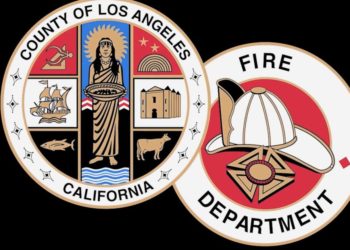Ross E. Rowland Jr., who made his fortune trading pork belly futures on Wall Street but was never happier than when he swapped his suit and tie for a locomotive engineer’s jacket and cap as one of America’s foremost steam-train buffs, died on July 19 in Watertown, N.Y. He was 85.
His wife, Karen Bendix, said the cause of death, in a hospital, was lung cancer. He lived in nearby Sackets Harbor, on Lake Ontario.
The son — and grandson, and great-grandson — of railroad workers, Mr. Rowland had been in love with steam trains for as long as he could remember. He dreamed of getting to drive a locomotive of his own, and after founding one of the largest commodities brokerages in New York, he had the wherewithal to fulfill that wish.
In 1966, he started the High Iron Co., which offered trips around the Mid-Atlantic States in authentic rail cars pulled by vintage locomotives — including, eventually, Mr. Rowland’s pride and joy, the C&O No. 614, a 112-foot, 239-ton colossus that he bought and refurbished in 1979.
Mr. Rowland was the prime mover behind the Golden Spike Centennial Limited, which in 1969 carried passengers from Grand Central Terminal in New York City to Promontory, Utah, to mark the 100th anniversary of the first transcontinental railroad.
A few years later, he created the American Freedom Train, a traveling museum stocked with choice items from the Smithsonian Institution — George Washington’s copy of the Constitution, Joe Louis’s boxing trunks — that cruised through all 48 contiguous states in 1975 and 1976 in celebration of the country’s bicentennial.
Trips on Mr. Rowland’s trains were not your typical 20-mile-an-hour trots along a disused spur line, but full-tilt sprints behind a half-a-million-pound engine. It was the difference between a pony ride and a thoroughbred race.
He realized his passion at the right moment. By the late 1960s, steam trains had long been surpassed by diesel, but rail traffic was down across the board, leaving plenty of room on the tracks for enthusiasts like him to organize private excursions.
From his office in a converted train station in Lebanon, N.J., he directed trips from Hoboken up the Hudson River, or across northern New Jersey to Port Jervis, N.Y., along the Delaware River.
Mr. Rowland was convinced that coal-powered steam trains could make a comeback, especially during the era of high oil prices in the 1970s and ’80s. He spent a considerable sum on a project called ACE 3000, a high-tech steam locomotive that ultimately proved unworkable.
But his dream was never really about dollars and cents.
“Compared to any steam engine,” he told Trains.com in 2018, “no diesel could come close in my heart.”
Ross Ellsworth Rowland Jr. was born on July 11, 1940, in Albany, N.Y., the son of Ross E. Rowland Sr. and Helen (Jackson) Rowland. A few years later, the family moved to Cranford, N.J., where his father worked for the Central Railroad of New Jersey. His mother ran the household.
Young Ross took to hanging around a nearby rail yard.
“I became something of a mascot to those who worked there,” he told New Jersey Business Magazine in 1994. “Eventually they trusted me to help lubricate the trains. It was so exciting because I was helping maintain steam locomotives.”
When he was 14, he ran away from home after a fight with his parents. In California, he found work at a luxury resort frequented by John Wayne. But after three years, Mr. Wayne, who had hired him as a driver, told Ross to go home to his mother, which he did.
He completed high school, but instead of attending college, he followed a friend to Wall Street, where he founded Floor Broker Associates. It executed commodities trades for some of the biggest investment firms in the country.
Mr. Rowland’s first marriage, to Doris Lakin, ended in divorce. He married Ms. Bendix in 1998. Along with her, he is survived by two children from his first marriage, Cathy Pattison and Joseph Rowland, and a grandson. Another son, James, died.
Soon after conceiving the Golden Spike Centennial Limited, Mr. Rowland reached out to influential friends for help — including Mr. Wayne. The actor rode along on the train from New York to Salt Lake City, where he tied its arrival to the local debut of his 1969 movie “True Grit.”
Afterward, Mr. Wayne told Mr. Rowland that with the national bicentennial coming up, he should think about replicating the Golden Spike’s success, but on a grander scale. The American Freedom Train was born.
It was a triumph. The train stopped in 138 cities and drew millions of paying customers. It marked the high point of Mr. Rowland’s success in steam-driven tourism.
As railroad companies consolidated and freight rail made a comeback, there was less and less track available for excursions like his.
He also suffered a series of high-profile business failures. In the 1990s, he created the 21st Century Limited, intended to replicate the American Freedom Train’s success, this time to mark the end of the millennium. After years of planning, the company went bankrupt.
The same thing happened to the Pacific Wilderness Railway, which operated for just over a year in 2000 and 2001 on Vancouver Island in Canada. A decade later, Mr. Rowland unsuccessfully tried to run a luxury train from Washington, D.C., to the Greenbrier Resort in West Virginia.
But he never gave up. He spent much of his last decade trying to drum up support for another American Freedom Train, this time to commemorate the country’s 250th birthday.
Mr. Rowland had finally begun to garner support in Washington when he was diagnosed with cancer, his wife said. The prospects for another American Freedom Train remain unclear.
Clay Risen is a Times reporter on the Obituaries desk.
The post Ross E. Rowland Jr., a Driver of Steam-Train Preservation, Dies at 85 appeared first on New York Times.




